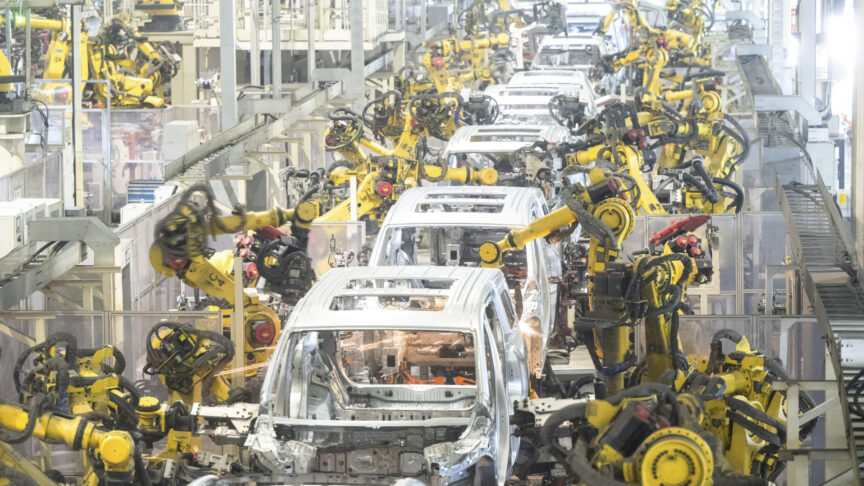What if the EU’s future lay with India?
A deepened relationship with India could provide fresh energy to a crisis-ridden Europe
After three years of struggle and almost abandonment, it will take more than a single meeting to craft the future of the EU-India relationship.
On 30 March, Indian Prime Minister Narendra Modi came to Brussels and met with Donald Tusk and Jean-Claude Juncker for the first time in an EU-India summit setting. The outcome of this meeting was a series of joint declarations on counter-terrorism, climate change, water partnership as well a common agenda on migration and an EU-India agenda for 2020.
This looks like a first step but anyone aware of what is at stake will admit that it is still far from what is required. Despite the strategic partnership between both entities, vested interests and competition between member states over India has sapped the purpose from this bilateral relationship. But this is surprising when we consider the similarities between Europe and India. Both are constituted with 28 states, with different languages, social and cultural systems, economic diversity and complicated relations with their neighbours.
To begin with, the Bilateral Trade and Investment Agreement (BTIA), which was not even mentioned at the 30 March meeting, remains the elephant in the room. While it remains separate from enhanced economic and trade relations, the EU-India relationship will remain a weak political project.
Europe’s economy has been struggling since the 2008 financial crisis and it needs to look at the East as a land of opportunities, even more so when the US is moving forward on trade agreements with Asian countries and sub-regional entities. The €450 million loan that was granted to India by the European Investment Bank to build a metro line in Lucknow stems from this desire.
It is surprising that while China is experiencing economic slowdown and political repression, it still remains more attractive than India, whose economic growth and untapped internal market are promising and whose democratic system – with all its faults – is much closer to ours. The opening of new representation of the European Investment Bank in New Delhi, for the whole of South Asia, will create a new impetus in the relationship. On the EU-India BTIA, the negotiators need to find a way to remove the longstanding obstacles in its path on intellectual property rights, the lack of transparency of public procurements and the red tape that goes with it as well as the ongoing discussions on lowering tariff barriers. This treaty is at the heart of the survival and pursuit of the strategic partnership.
Coming to Brussels precisely a week after the terrorist attacks, it is surprising that no concrete action plan on counterterrorism was discussed. This is not the time for joint declarations anymore. In the past year, Europe was attacked three times in its heart, while India is a country used to facing terrorist threats almost on a daily basis. For this reason it is inexplicable that Gilles de Kerchove, the European coordinator for counter-terrorism, did not take part in this meeting. Even though ISIS is not India’s main terrorist threat, it seems to be of interest for New Delhi, as they are experiencing more and more Indians leaving for Syria. In trying to solve the Syrian crisis, Europe should not forget that Syrian MFA Walid Muallem travelled to India with a high-level delegation in January 2016 to meet PM Modi, his counterpart Sushma Swaraj and National Security Advisor Ajit Doval.
In a previous article following the November Paris attacks, we argued that to face a Europeanised threat, we needed to Europeanise the response. Today, we go further still by calling for reinforced EU-India cooperation on counterterrorism, cooperation that goes beyond the 2020 action plan which limits itself “to work[ing] towards outcomes”.
The common agenda on migration agreed to in Brussels is a positive step in placing India on the map as one of the few countries with which the EU has signed such an agenda. By easing the visa regime between the EU and India, we are likely to foster the development of the Indian diaspora in continental Europe, and develop a migration policy based on the attractiveness of going back and forth. The “Make in India” brand coming to Europe would most likely foster economic relations – especially on the digital front – and create a well-needed dynamism. At a time when Europe is trying to launch its digital revolution reinforced cooperation with Indian businesses for whom connectivity is a high priority, would create a win-win situation for the Indo-European relationship.
Today, Europe is facing major existential crises and it seems clearer and clearer that the solutions will not come only from within. We need to look further afield for specific solutions that have been proven to work in more difficult and challenging environments. India has been going through an integration process for the past 60 years and has created a set of tools to handle the two major issues that Europe is struggling with: terrorism and internal migrations. What if the EU’s future lay with India?
The European Council on Foreign Relations does not take collective positions. ECFR publications only represent the views of their individual authors.


